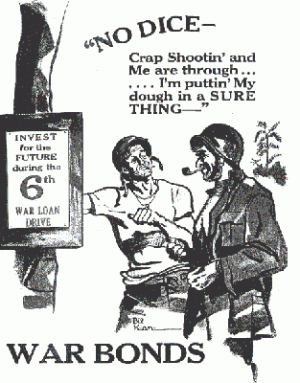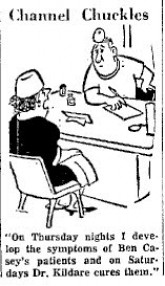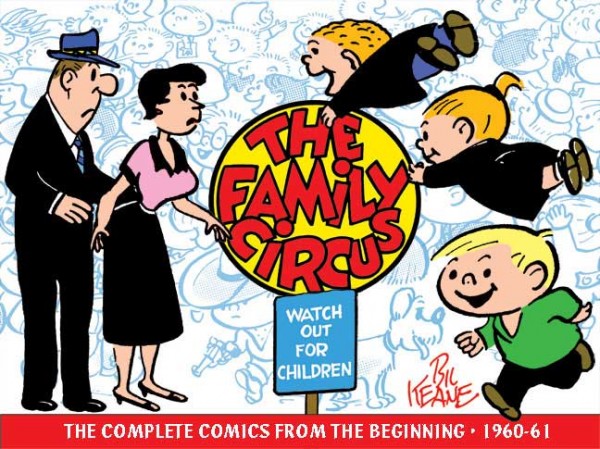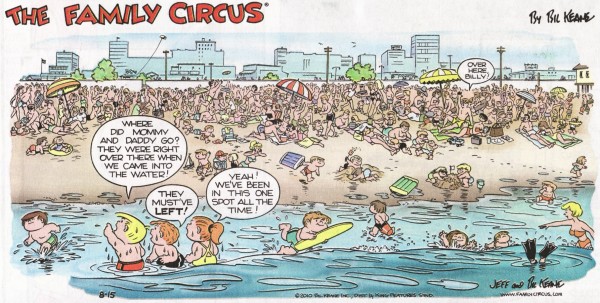 Home > News Story and Obituary Archive
Home > News Story and Obituary Archive Bil Keane, 1922-2011
posted January 1, 2012
Bil Keane, 1922-2011
posted January 1, 2012

 Bil Keane
Bil Keane, the veteran newspaper cartoonist behind the immensely popular single-panel comic feature
The Family Circus,
died on November 8 in his home in Paradise Valley, Arizona. The cause of death was congestive heart failure. Keane had apparently been in a state of decline for a few weeks before his final passing. He was 89 years old.
William Aloysius Keane was born in Philadelphia in 1922 to Aloysius and Florence Keane. Raised Roman Catholic by his devout parents in the northeastern Philadelphia neighborhood of Crescentville, Keane attended Catholic schools and graduated the then still reasonably new Northeast Catholic High School For Boys in 1940.
A biography written in Keane's voice that appears on the Family Circus web site says that the cartoonist began to draw at an early age and to formally make cartoons while in high school. This would have included publication in his school's newlcospaper
The Good News, and a satirical publication he created with fellow teens, the
Saturday Evening Toast. It was at the latter publication he first signed his name "Bil Keane." (He would later make two jokes about the lack of letter: that Mell Lazarus stole it, and that his parents beat the "l" out of him for various acts of misbehavior including becoming a cartoonist; the pen name was certainly simple and memorable, like much of Keane's work.)

Upon graduation, Keane was briefly a messenger for the long-established regional newspaper
The Philadelphia Bulletin. He left that job for service in the US Army during World War II. Keane was stationed in the Pacific Theater. Some accounts have him working as a cartoonist for
Stars And Stripes -- he was definitely a contributor to the Pacific edition of the military publication and to the magazine
Yank -- and others have Keane as a general artist and poster designer for a promotional office. Historian RC Harvey
in his extremely thorough obituary at The Comics Journal calls Keane a tech sergeant. It was while in the service that he met his future wife, Thelma Carne, a native Australian that took a job that placed her desk right next to Keane's. They started dating while working together and were married in 1948 in Brisbane.
The Keanes settled down in Roslyn, Pennsylvania, a small community about 15 miles directly north of downtown Philadelphia. For a time, they lived next to Keane's brother Bob, and his multiple children. Keane worked as a staff artist on the
Philadelphia Bulletin for over a decade following the war. At the time, the
Bulletin was in one of the great runs of the 20th Century by a metropolitan newspaper: buying out its competition, investing in other media and becoming the nation's largest afternoon newspaper when such publications still played a major role in American daily life. The general editorial culture at the
Bulletin was genteel and neighborly, an approach to business that may have made an impression on the cartoonist. Being in Philadelphia also allowed Keane to get to know some of the East Coast's other prominent cartoonists, including some of the up-and-comers from his own generation.

While at the
Bulletin Keane contributed to the paper's Sunday comics package "Fun Book" with a few features, perhaps most prominently a cartoon called
Silly Philly.
Silly Philly featured a child dressed like William Penn. Harvey identified Keane's other
Bulletin-era features as
Mirthquakers (gags),
Corn Crib (puns),
The Master (about a put-upon dad),
The Suburban Set (about life in the suburbs), and
The Silent Set (pantomime). While the first two were regular features in "Fun Book" the rest were frequently isolated by gag and sold to magazines such as
Collier's and
Saturday Evening Post, making Keane a successful freelance cartoonist by the competitive standards of the late 1940s and 1950s.

Keane enjoyed his first major strip success, the syndicated TV-culture feature
Channel Chuckles, after trying to sell the Register & Tribune Syndicate on his
Corn Crib feature.
Channel Chuckles ran until 1976, with some newspapers running it in their devoted TV sections rather than on the comics page. Many of the jokes about television remain potent -- or at least recognizable -- today, far after the heady novelty that surrounded the once-new entertainment device and the medium supported by it.
In the late 1950s, Keane was one of the first prominent syndicated cartoonists to move from a home in the eastern corridor of the U.S. to somewhere in the warmer west. The Keanes settled near Phoenix in the community of Paradise Valley directly north of Scottsdale by at least early Spring 1959. For the duration of his life, Keane was an active booster of his adopted home area. He convinced the writer Erma Bombeck, among others, to relocate to the region.
Keane approached his syndicate in April of that year with a pantomime feature
Spot News.
Spot News quickly faded after a June debut, but impressed its creator with the power and versatility of the circle it employed in its presentation.
The Family Circus launched in February 1960 as
The Family Circle. This was technically a soft relaunch of the
Spot News feature, the new feature being given to existing
Spot News client newspapers in the hopes they would continue with the new feature over the old one. Even with that perceived step up, it still only mustered 19 clients on its launch date.
Keane's new feature offered a portrait of a family roughly equivalent to Keane's own. The patriarch, Steve (later Bil, and remodeled), was a cartoonist and veteran of World War II. His wife, Thelma, was closely visually based on Thelma Keane. The initial group of kids -- Billy, Dolly, and Jeffy -- were composites of the five Keane children. Youngest child PJ was added in 1962, and aged slightly in subsequent months to bring him up to toddler status; the other children have remained roughly the same age for the lifetime of the feature.
The strip proved successful enough that by Fall 1961 a Sunday version was made available. Keane would that same year end his freelancing (along with it
Silly Philly) for both the
Bulletin and for magazine clients so that he could concentrate on his two syndicated offerings. Threatened legal action from the magazine
Family Circle had forced a title change by late summer 1960.
 Family Circus
Family Circus was initially a well-observed portrait of family life: harried parents interacting with precocious children. Given his own family and Keane's general skill with humor honed for more than 15 years in the crucible of freelance cartooning and in daily syndicated strip production, it's likely
Family Circus could have been successful just following that kind of situation comedy path for the feature's lifetime. A joke about a half-dozen years into the
Family Circus run that was less of a punchline and more a request from one of the children for affection brought in enough mail that Keane began to sprinkle his feature with such moments. In this midstream recalibration, the emphasis fell on more wholesome humor and the idea of the family as a protected place where the kids felt safe and loved.
Keane's strip is often dismissed -- or celebrated -- as wholesome Americana and as a major source of family-ready humor, and it was both of those things. Yet the strip's appeal seems greater than that due an exemplar of scrubbed content. Keane's comic may have been the first to present not just clean material -- Charles Schulz's psychologically troubled kids were clean -- but an approach to humor and story moments designed to make the family at the strip's center a kind of idealization of decent behavior. The average reader may not have lived in a family like the one in
The Family Circus spotlighted, but they probably had memories when it seemed that way, or perhaps they simply wished it were so. That circle became for the reader the safe place that the two-parent home it featured was for its young inhabitants. As the local newspaper became for its readers a respite from the assault of modern living and pop culture, and as such publications were consumed by an increasingly older readership,
The Family Circus presented a portrait of caring and expressed affection that struck a significant and resonant chord. Several strips that have debuted since owe
Family Circus a debt for uncovering and then putting on display how one might reap the rewards, creatively and financially, of this powerful, basic approach. In that way,
Family Circus is clearly one of the most influential strips of the last 50 years.
 The Family Circus
The Family Circus also put on display day-to-day virtues derived from Keane's impressive cartooning skill set. It was always snappily drawn, and its recurring gags were deeply, instantly memorable: the single-image with multiple word balloons, the kid-drawn substitute strips, or the various gremlins that perpetrated acts for which the kids were blamed. An approach to Sundays where the elaborate path taken by one of the children on behalf of some small task was spotlighted by a dotted line is one of the most striking and recognizable graphic flourishes in newspaper strip history. Keane also put to use some subtle design elements, for example playing with multiple points of focus in a way that gave some of his strips levels of visual interest that probably wouldn't have existed if one were to come across a similar scene in real life. The character designs of the children are so memorable that other cartoonists have made jokes just by including someone with a similarly shaped head in their own comic strip. While Keane indicated in some story details that his cartoon family might live in Arizona, he also had no problem introducing the snow he remembered from back east whenever the feature called for it. As in many other ways,
The Family Circus was less about life in a certain state than life as a certain state of mind.
Family Circus appeared in approximately 1500 newspapers at its height and remains a strong-selling and strong-polling syndicate offering. It is a major success by any standard, and an unbelievable perennial when you begin to count how many years the Sunday and dailies have been popular.
While Bil Keane's success was largely derived from publishing, some crossover media items came into existence over the years. It's been a popular calendar property. There was a series of holiday television specials done beginning in the late 1970s that featured the characters. They include
A Special Valentine With The Family Circus (1978),
A Family Circus Christmas (1979) and
A Family Circus Easter (1982). The last of those might be the most memorable for Dizzy Gillespie doing voice work as the Easter Bunny. Keane received a writing credit on all three specials. Bil Keane's son Glen, who worked on the Christmas and Easter specials, would go on to become one of the better known creators in North American animation. (Glen Keane may be best known for focusing on animating sequences in various big-budget animated movies featuring female characters; he was a nominee for the 2011 Reuben.) Bil Keane only rarely took on freelance work after the strip found an audience, but in one high-profile exception he illustrated his close friend Erma Bombeck's
Just Wait Till You Have Children Of Your Own in 1971. According to Harvey, his volunteer work included tours with the USO.
Family Circus was collected in the popular digest format by which many latter-half 20th Century strips found a greater audience. This happened first in 1961, and then with great regularity beginning in the mid-1960s. Fawcett Gold Medal Books has handled the bulk of the paperback collections, publishing over 14 million copies of those books.
In 1982, Keane won the Reuben for Outstanding Cartoonist Of The Year. He was a four-time winner of the divisional award Best Syndicated Panel (1967, 1971, 1973-1974). Keane also took home the 1982 Elzie Segar Award given for his contributions to the profession and the 2002 Silver T-Square Award for his work with the National Cartoonist Society. He was President of the NCS from 1981 to 1983. This was a period of transition among cartoonists, as many of the great second generation of successful strip cartoonists began to pass away. Keane was a defender of traditional comics-page values, later criticizing Bill Watterson for the unique space demands that the
Calvin And Hobbes cartoonist made in the second half of his short syndicated career.

In 1988, Keane became one of the syndicated newspaper cartoonists to have the full rights to his comic returned to him after previously signing them over to the syndicate. The negotiations were managed by Thelma Keane, the family's longtime -- and by reputation quite skilled -- business manager.
Keane perhaps became best known by the generations of cartoonists that emerged in the 1980s and 1990s as the emcee for the annual NCS dinner, and a presence at the roasts with which the group used to close their Spring weekend meetings. Keane's wit and acerbic joke-telling seemed both familiar in that it reminded many of the kind of larger-than-life presence famous cartoonists used to have, but also completely at odds with the perception of the man that one might derived by reading the gentle
Family Circus panel. Keane had a general reputation for a quick-witted speech amongst his fellow cartoonists and in the small handful of press people given over to covering that specific field.
Jeff Keane began to work with his father in 1981 on a wordplay-centric strip called
Eggheads that never garnered much more than a mid-two figure client list. That strip was discontinued in 1983, and the younger Keane went to work for the elder more directly. He's mentioned by his father as an inker and colorist in that initial period, taking over duties that had previously fallen to a much-loved employee of Keane's, Bud Warner. Jeff Keane later became an outright co-creator, and in recent years has worked as the feature's sole creator, taking suggestions and roughs from his father as they were provided but doing the bulk of the work himself. According to statements made following his father's passing, Jeff Keane plans on continuing the still-popular strip.

The comics publisher IDW began collecting early installments of the strip into over-sized volumes in 2009. Two of these books have been published to date. In a statement the company posted to their web site, they declared that "Those endlessly curious, often too clever children and their loving, long-suffering parents captured the essence of the typical American family."
Keane was preceded in death by his wife in 2008. He is survived by four sons (Neal, Glen, Christopher and Jeff), a daughter (Gayle), nine grandchildren and one great-grandchild. He died in the presence of family, all of whom came to see him one last time.
*****

*****
*****


